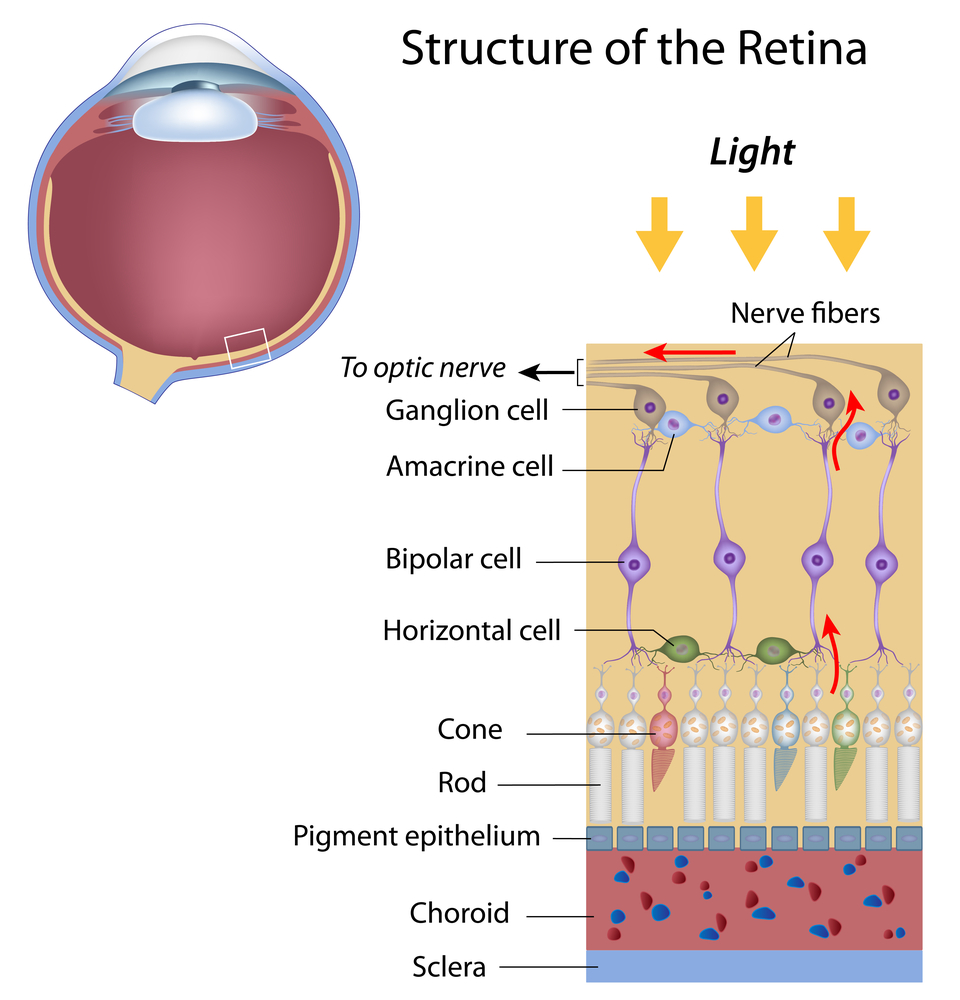Retinal diseases are abnormal and potentially sight–threatening conditions and irregularities that affect the interior of the eye — the retina and the vitreous.

The retina is the interior lining of the eye that contains millions of light–sensitive nerve endings called “rods” and “cones,” most of which are concentrated at the back of the eye. The retina transmits nerve impulses through the optic nerve at the back of the eye to the brain. The central portion of the retina is called the macula and provides central vision. In the center of the macula is the fovea, which provides the sharpest vision. Outside of the macula is the peripheral retina which provides peripheral vision
The vitreous is a clear, gel–like material that fills the eyeball and produces the eye’s spheroid shape.
In this section learn about…
- Macular degeneration, a progressive deterioration of central vision
- Diabetic retinopathy, blood vessel problems associated with diabetes
- Flashes and floaters, the perception of threads or debris within the eye
- Retinal detachment, when the retina pulls away from the its normal position
- Vitamins, which can improve and enhance eye health






